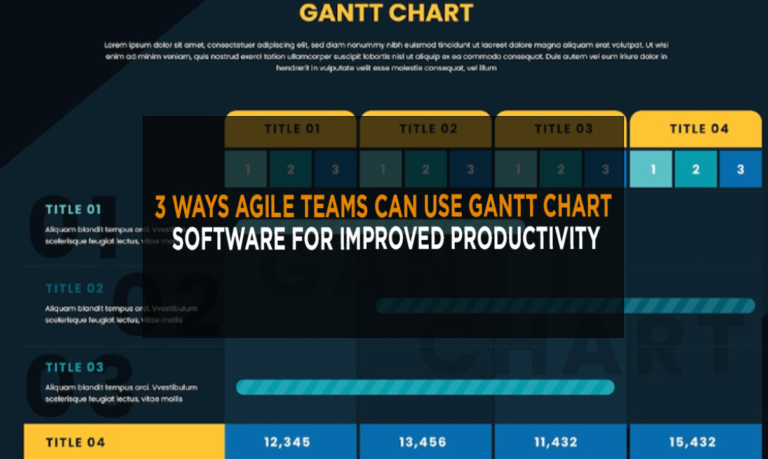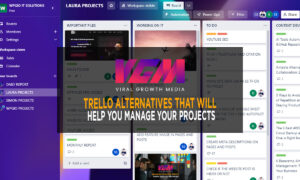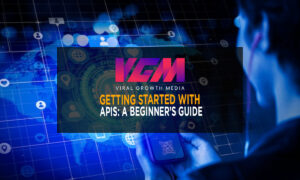If your team is agile, you already know that adaptability and flexibility are crucial for success. You might also be aware that adopting Gantt chart software helps increase your output. This blog post will go through three ways agile teams can use Gantt chart software to enhance workflow.
You may use Gantt chart software to build several charts that can aid in visualizing your project data. A Gantt chart, for instance, can be used to make a timetable of your project’s duties. This enables you to identify what needs to be done and when quickly. Gantt charts can also be used to monitor job dependencies. This helps ensure everyone is on the same page and that no work gets overlooked.
Gantt chart software allows you to manage your resources in addition to allowing you to visualize your project data. You can delegate work to particular team members and keep tabs on their performance. This helps keep the project on track and ensures everyone is informed of their duties.
Software for Gantt charts can also be used to produce reports. This is useful for monitoring the development of your team and pinpointing areas that require improvement. Stakeholders can also receive notifications to keep them informed about the progress of your project.
Using Gantt chart software can increase your team’s productivity in various ways. The use of Gantt chart software is something you should think about if you want to enhance your productivity. You may use it to manage your resources, create reports, and visualize your data. All of these items can assist you in maintaining the direction and success of your project.
Agile is the outlaw, opposing conventional project management approaches. Gantt charts date back more than a century. Can these conflicting parties cooperate?
Although Agile provides cutting-edge methods for managing a quick-moving project, it is not ideal for managing all projects or aspects of a single project. Traditional approaches produce outcomes after a project, but agile methodologies have results early and frequently. Agile welcomes change and adjust to it. Traditional methods manage change to prevent unforeseen issues.
This doesn’t mean that they can’t identify some points of agreement. A lengthy and complex project will often employ a variety of techniques. Some might use Agile for the smaller projects’ sprints, while others would use a top-down Waterfall methodology.
In large projects, various teams typically manage different project objectives. Product development may require a more structured environment to complete work because these groups focus on multiple aspects of the project. At the same time, the IT team is familiar with the Agile approach. In other words, a hybrid system is being used to complete the project.
If you’re in charge of the project and overseeing both teams, search for a tool that can be customized for any potential users. This is where a team-oriented, web-based project management tool is useful. You can convince a more progressive Agile team to use a standard function like a Gantt chart after you’ve developed a centralized tool that can plan, track, and report to fulfill the needs of many teams.

Three ways to use Gantt chart software
1. Sprint tracking
Throughout any project, Gantt charts offer an easy, rapid way to see which tasks must be accomplished and when. Teams operate in sprints, which are essentially brief stages that typically span between one and four weeks, according to the Agile PM approach. A Gantt chart is an excellent tool for recording this data for later use.
A sprint in Agile Planning comprises interdependent tasks, so Gantt charts help with task interdependence. Assemble these items with their start-to-finish dependencies so you may determine which ones should be shifted out of the current sprint or perhaps the entire delivery date at your daily progress meetings. The Gantt chart’s associated dates will be immediately updated when you move those elements.
Stakeholders in the project may also make adjustments requests, which you should record and include in your Gantt chart. You can use this to decide which to focus on during each sprint. As the team completes their sprints, the backlog items will change. Make sure to record each sprint job and the number of hours it took to complete. It is simple to see what must be done using Gantt chart tools. Additionally, they can support color coding. You always know exactly where each job in each sprint stands since the Gantt chart is updated in real-time as your team updates its status.
Best Gantt chart software for sprint tracking
Smartsheet:
Users of Smartsheet’s Gantt chart can define dependencies, evaluate task relationships, and determine which steps of their projects are crucial. Rows can be utilized hierarchically to produce summary reports, and tasks can be shown with percentages indicating their completion status. Smartsheet provides templates for agile teams created expressly to aid with work planning, task management, and project progress visualization.
2. Collaboration tool
Gantt charts are handy for organizing workloads with your team and tracking progress during sprints. In truth, specific Gantt charts contain powerful features that encourage user cooperation.
Team members can plan and monitor each other’s progress during the sprint using a Gantt chart solution. This comprises recording task-level deliverables, attaching files with notes and comments, etc. Everyone on the team may stay informed about what needs to be done and when it has to be delivered by accessing this information.
Combining everything in a spreadsheet can give you reports on your development progress. In some circumstances, you may even connect tickets or problems to a specific job, making documents and URLs accessible to anyone who needs them.
Best Gantt chart software for collaboration
ClickUp:
Project management software with powerful Gantt chart features that promote teamwork uses Gantt charts. On tasks in the Gantt chart, users can make adjustments, post comments, and receive feedback in real-time. The color coding of everything makes visualizations much more straightforward.
3. Integrated timesheets
Timesheets can be combined with Gantt charts, a component of project management software applications. You can detect if your staff is overworked or if the project requires extra resources by keeping track of the amount of time they spend on it.
Use this data to determine how much progress has been made in a specific period, and then use that data to generate stakeholder reports. You may assess your team’s productivity and choose which employees are most suited for the upcoming task or project. You can more effectively assign impending tasks by being aware of each team member’s strengths. For instance, you can incorporate skill sets and discover people with such skills when posting work using Gantt charts.
Best Gantt chart software for timesheets
Paymo:
Paymo started as a standalone time-tracking program but has since developed into a complete project management tool, including Gantt chart functionality. Users may identify dependencies, see who is in charge of what activity, and modify the chart as needed if there are problems with the project. You won’t need to use a different application to track each action’s length because Paymo is also a time tracker.

What Is Gantt Chart Software?
Project management software, often known as Gantt chart software, was developed to automate the creation and update of Gantt chart software. This kind of software supports such complex needs as task dependencies, milestones, and determining the critical path. Watch the video below for a quick overview of Gantt chart software and its benefits.
Gantt Chart Example;
- The project’s schedule’s start date
- What are the project’s objectives are
- Who in the team is responsible for each task
- when things start and stop
- The level of completion for each task
- How jobs are grouped, overlapping, and connected
- dependencies between tasks, including finish-to-start, start-to-start, finish-to-finish, and finish
- Project milestones and phases are listed on the timetable
- The project’s critical path
- The project’s completion date

How to Make a Gantt Chart
Use the horizontal axis to indicate a timetable and the vertical axis to list the tasks that need to be completed to build a Gantt chart. As you enter task start dates, end dates, and dependencies, which represent task durations, bars on the stacked bar chart will populate. This will take place automatically if you use project management software that includes a Gantt chart maker.
Excel and project management software, commonly called Gantt chart software, are frequently used to produce Gantt charts. If you create Gantt charts with Gantt chart software rather than an Excel Gantt chart template, you’ll be able to do more than just observe task durations and due dates.
With Gantt chart software, you can;
- Put together a work breakdown framework.
- Task-sharing with team members
- Real-time monitoring of project progress
- Timelines can be moved around to change your project schedule rapidly.

Create a Gantt Chart with Templates
Microsoft Excel’s Gantt chart templates might be attractive to look at, but they don’t offer much else. You need Gantt Chart software if you want to use your Gantt chart template to allocate tasks, control expenses, balance resources, and more during the execution phase of your project. Using this software, your Gantt chart will no longer be a static document but interactive and dynamic.

The Benefits of Online Gantt Chart Software
It’s customary to make task lists in spreadsheet programs like Excel. It’s possible that they produced a simple Gantt chart, similar to the one we offer in this free Gantt chart template. This is effective when making a task list of assignments only one person will see.
Gantt charts are considerably simpler to make online when you want to share your project timeline with additional individuals. As people modify their percentage of completion, post comments, or attach files, tasks are updated in real-time. As a project manager, you may easily adjust by dragging and dropping charges on the task chart rather than modifying the schedule directly.
Conclusion
Agile teams can quickly modify their plans to accommodate the needs of their clients. Gantt chart software makes it easier to see your project timeline and monitor progress, increasing team productivity. Additionally, a Gantt chart can assist you in seeing possible obstacles before they cause your project to stall. Have any of your agile initiatives ever used a Gantt chart? What advantages did you observe?























